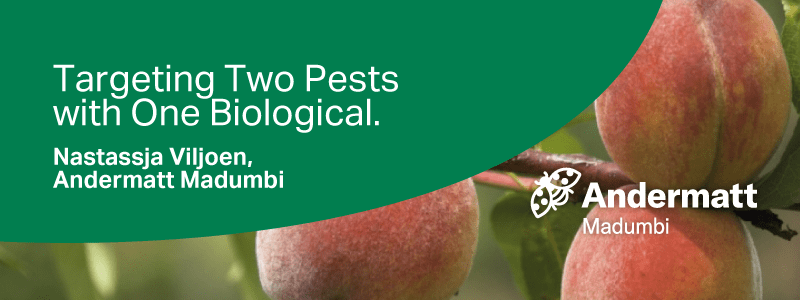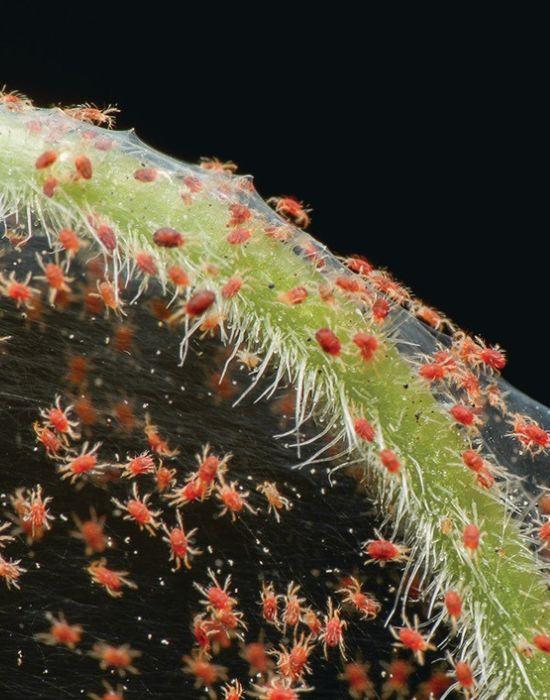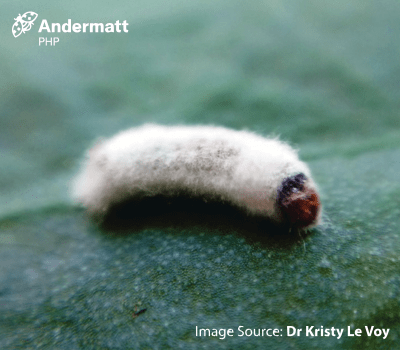
Stone fruit has been the pioneer in the South African export fruit market since 1892 when the first 14 cases of peaches arrived in England with less than 5% decay, selling at an astounding price.

Since then, the South African stone fruit industry has grown and currently produces on average 350 000 tons per year. However, the stone fruit industry has been hit hard in the past few seasons and the industry will have to refocus and regain momentum ahead of exporting this season.

Amongst other factors which play an important role in the export of stone fruit are the phytosanitary pests, namely false codling moth (FCM) (Thaumatotibia leucotreta) and red spider mite (Tetranychus urticae).

Stone fruit has been the pioneer in the South African export fruit market since 1892 when the first 14 cases of peaches arrived in England with less than 5% decay, selling at an astounding price.
Since then, the South African stone fruit industry has grown and currently produces on average 350 000 tons per year. However, the stone fruit industry has been hit hard in the past few seasons and the industry will have to refocus and regain momentum ahead of exporting this season.
Amongst other factors which play an important role in the export of stone fruit are the phytosanitary pests, namely false codling moth (FCM) (Thaumatotibia leucotreta) and red spider mite (Tetranychus urticae).




False Codling Moth
(Thaumatotibia leucotreta)
False codling moth females lay their eggs on the skin or rind of the fruit and, within six to twelve days, the larvae hatch, and bore into fruit. The larva completes its life stages within the fruit before it drops to the soil to pupate. Infested fruit also drop to the floor, thereby also directly impacting the yield.
Red Spider Mite
(Tetranychus urticae)
Red spider mite flourish in the warm weather of the Western Cape, especially when trees are under stress. Red spider mite populations increase significantly during hot, dry weather, and can complete a full life cycle within 14 days when average daily temperatures are above 25°C. Leaves infested with red spider mites become mottled and are covered by fine webbing
The mites disrupt the photosynthesis process, and eventually the leaves will wilt and die. Even though red spider mites prefer the underside of leaves, they also move to the fruit during severe infestations, causing the fruit to become speckled.


A Biological Solution
Since both pests cause serious economic loss for the stone fruit industry, and FCM carry phytosanitary risks, it is vital to build a strong Integrated Pest Management (IPM) program. Eco-Bb® (active: Beauveria bassiana) is a registered biological control product focusing on the suppression and population control of both red spider mite and false codling moth (FCM) in stone fruit.
Eco-Bb® ® is an environmentally-friendly biological solution which can be applied up until harvest in an IPM program. Eco-Bb® suppresses pest populations which allows for the build-up and establishment of natural predators to control pests more effectively and economically.

Mode of action
Eco-Bb® has two modes of action, namely contact and ingestion, and different modes of action are involved with the suppression of different pests. When Eco-Bb® is applied to host plants spores make contact with the pest, either by direct spraying onto the insect, or indirectly as the pest crawls over the treated substrate. The spores attach to the cuticle (outer skin) and begin to germinate (Fig. 1). This mode of action is relevant to red spider mites as well as FCM. Some insects also ingest spores through feeding on treated plant material, with the spores infecting through the mouthparts of the pest. FCM larvae can ingest spores as they start to burrow into the fruit.
As Eco-Bb® spores germinate, enzymes are secreted which weaken the cuticle and the appressorium penetrates the pest’s body. The fungus continues to grow internally, feeding on the pest’s internal organs. The pest stops feeding and can die within 3 to 5 days. The fungus grows out through the cadaver to sporulate, producing more spores and a continued source of inoculant for other pests. Figure 2 (Fig.2) illustrates Eco-Bb® spores attached and germinating on a false codling moth larva.

Figure 2. The cadaver of a false codling moth larva treated with Eco-Bb®, covered in and producing Beauveria bassiana spores.
Eco-Bb application recommendations:
- Full cover application.
- Dose rate of 600 to 1000 g/ha.
- Minimum of three applications are required for optimal suppression.
- 7 to 14-day intervals (depending on pest population pressure).
Contact our trained Bio-specialist in your area to find out how Eco-Bb® can be incorporated into your current IPM program.
Author:
Nastassja Viljoen
Technical Development Specialist, Andermatt Madumbi
